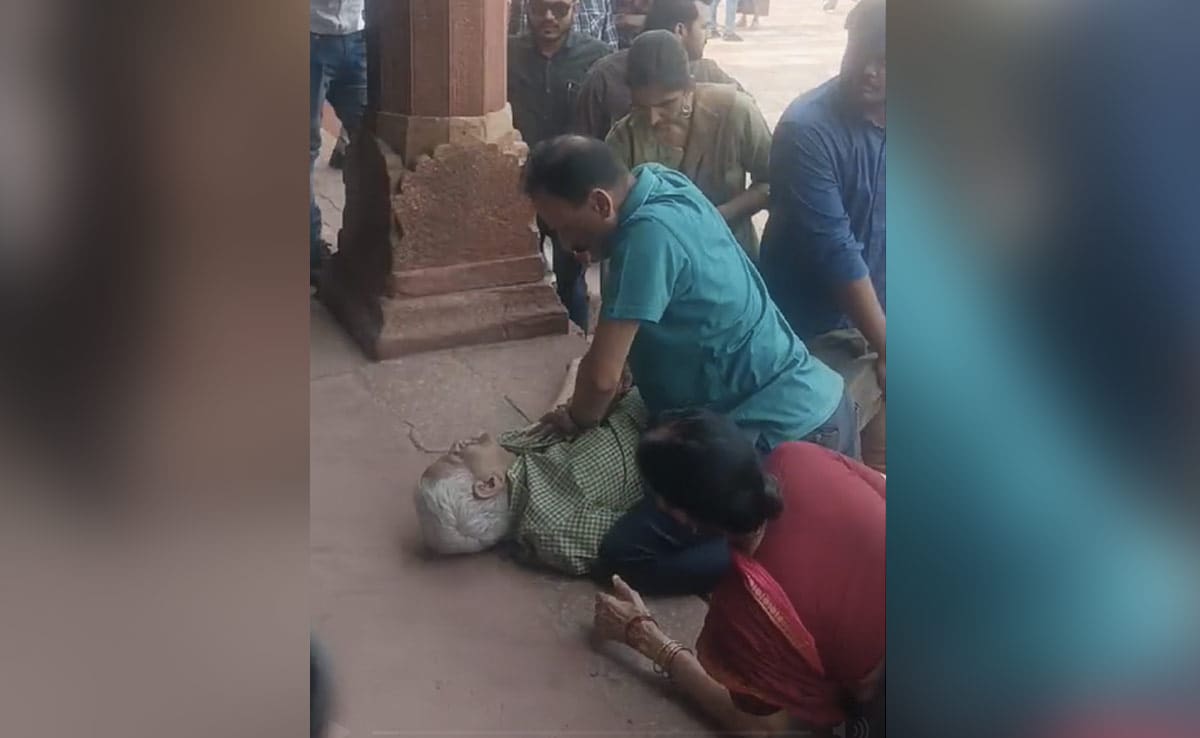
A video of a tourist being given CPR (Cardio-Pulmonary Resuscitation) by his son at Taj Mahal is being widely circulated online.
The man, who came with his family to see Taj, had a heart attack while inside the complex.
His son immediately gave him CPR, which many recorded on their cellphones. The live video has now gone viral, underscoring the importance of learning such basic first aid moves.
The man recovered after a while and was moved to a hospital.
More details are awaited.
CPR keeps a person’s blood flowing until healthcare professionals arrive to help. Even people without formal first aid training can save a life by using CPR.
To give CPR, place the person on his back in a safe area and tilt his head back slightly by lifting the chin. Open his mouth and check for obstruction, such as food or vomit. Carefully remove obstruction if there is any.
Place your ear next to the person’s mouth and listen for 10 seconds. If you do not hear breathing, or hear occasional gasps, begin CPR.
Place one of your hands on top of the other and clasp them together. With the heel of the hands and straight elbows, push hard and fast in the center of the chest, slightly below the nipples. Push at least 2 inches deep.
Making sure his mouth is clear, tilt their head back slightly and lift his chin. Pinch his nose shut, seal your mouth over his, and blow.
If his chest does not rise with the first breath, tilt his head again properly. If their chest still does not rise with a second breath, the person might be choking.
Each breath should last about 1 second and makes the chest rise, allow air to exit before giving the next breath.
Compress chest at a rate of least 100 or 120 times a minute. Let the chest get back to normal position between compressions. Repeat the cycle of 30 chest compressions and two rescue breaths until the person starts breathing or help arrives and takes over.
If CPR is done immediately after someone’s heart stops beating, it can double or even triple the chances of survival.




